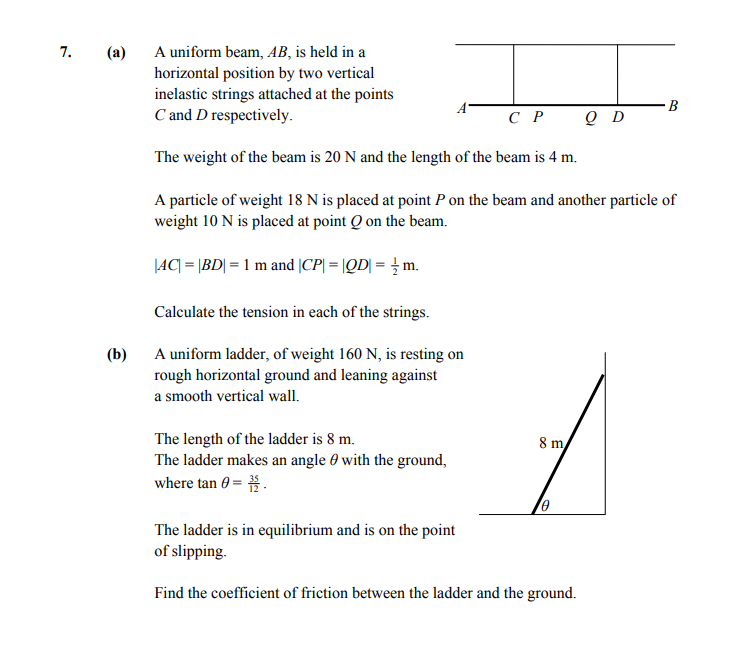Photo AI
A uniform beam, AB, is held in a horizontal position by two vertical inelastic strings attached at the points C and D respectively - Leaving Cert Applied Maths - Question 7 - 2015
Question 7

A uniform beam, AB, is held in a horizontal position by two vertical inelastic strings attached at the points C and D respectively. The weight of the beam is 20 N a... show full transcript
Worked Solution & Example Answer:A uniform beam, AB, is held in a horizontal position by two vertical inelastic strings attached at the points C and D respectively - Leaving Cert Applied Maths - Question 7 - 2015
Step 1
Calculate the tension in each of the strings
Answer
To find the tensions in the strings at points C and D, we apply the principle of moments about point P.
-
Total Weight Calculation: The total downward force can be calculated as:
-
Moments about Point P (Pivot):
- The moment due to T2 is calculated as:
- Simplifying, we have: Now solve for T2:
-
Finding T1: Now substitute T2 into the total weight equation: Thus:
Step 2
Find the coefficient of friction between the ladder and the ground
Answer
-
Force Analysis: The forces acting on the ladder include its weight and the normal forces at the ground and the wall. Let:
- Weight of the ladder:
- Normal force at the ground:
- Normal force at the wall:
-
Using Trigonometry: The ladder's configuration gives: From this, we derive:
-
Setting Up for Friction: The vertical force balance gives:
-
Friction Coefficient Calculation: The frictional force at the ground provides: Hence: So, the coefficient of friction between the ladder and the ground is approximately
0.17.
